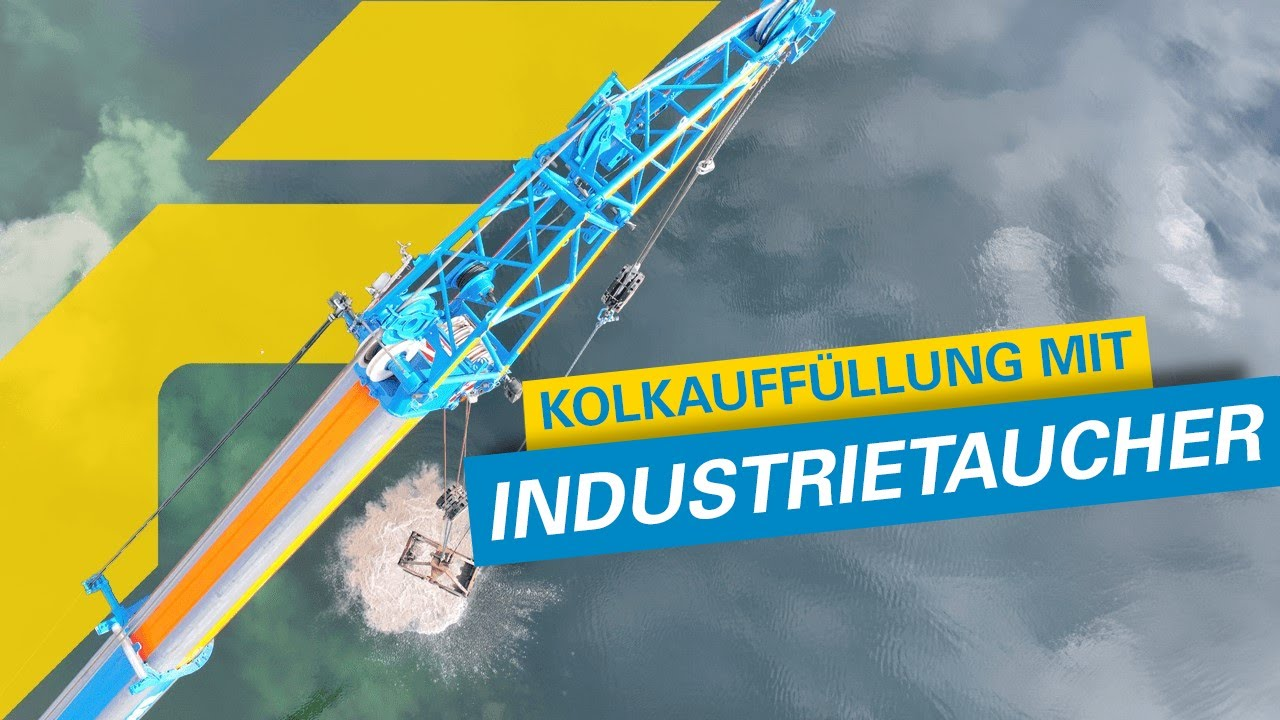Industrial divers in action
March 6, 2024 | Lucia Reinsprecht
The industrial divers set out on an initial reconnaissance mission in order to clarify the extent of the washout. "The case revealed that the deepening was larger than expected," explains Volker Brand, the site manager responsible for the Felbermayr building, industrial and power station construction division. A 230-ton truck-mounted crane, an excavator and several truckloads of armour stone were then ordered to the site. Since the crane was parked below the dam along a popular footpath and cycle path, it had to be blocked and rerouted accordingly. "We had to then obtain the necessary permits from Wels municipal council and implement the detour," reports Brand.
Installation with industrial divers in full operation
Water temperature of three degrees and clear visibility: The clear Traun was a particular highlight among the divers from Hagn Umwelttechnik, who receive special training for such operations. "We normally work in waters where the visibility is five to ten centimetres," says diving operations manager Michael Wieser, one of the three divers involved in the mission. The first step involved investigating the extent and location of the washout at a depth of around six meters. The relevant areas were marked with buoys to make things visible to the workers on the surface. The divers were equipped with an underwater camera as well as an air hose and a voice connection to the operations commander ashore. "We were in constant contact with the signaller on the dam by means of an intercom system and video," Wieser continues. The use of the divers meant that the work could be undertaken at full capacity.
A weight of up to five tons
Equipped with a double winch and grappling equipment, the truck-mounted crane was then deployed. A radius of up to 30 meters guided the crane boom over the dam to the Traun. The signallers and divers worked closely together to gradually fill the areas with the rock material. "We returned to the water every one and a half to two hours so that we could check the position of the armour stones, weighing up to five tons," adds Wieser. Rock material of varying sizes was used to eliminate the scouring and prevent further erosion. "This is how we achieve optimum interlocking," explains Brand. Altogether, around 700 tons of filling material was used to this extent.







